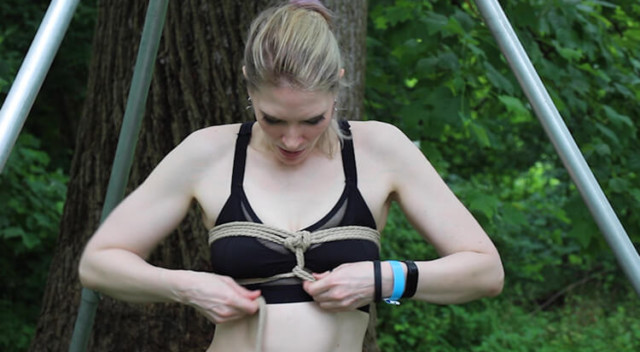Self Suspension with Shay
- Self Suspension: Spotters
- Self Suspension: Spotter’s Perspective
- Self Suspension: Vector Forces
- Watching Self Suspension
- Self Suspension: Chest Harness Part 1
- Self Suspension: Chest Harness Part 2
- Self Suspension: Adding Rope
- Self Suspension: Hip Harness
- Self Suspension: Hanger for Chest Harness
- Self Suspension: Adding Hip Harness Support
- Self Suspension: Hanger for Hip Harness
- Self Suspension: Uplines – What Not to Do
- Self Suspension: Uplines – How to Do Them Effectively
- Self Suspension: Set Up for Your Scene
- Self Suspension: Getting Off the Ground
- Self Suspension: Body Awareness
- Self Suspension: Transitions & Inversions
- Self Suspension: Head Support
- Self Suspension: Inversion Variations
- Self Suspension: Coming Down
Thanks for Your Support
Become a member or log in to watch this video.

Thanks for Your Support Become a member or log in to watch this video. Preview The first part of the self-suspension sequence for this series requires a chest harness. Shay refers to hers as a “reverse-tension” harness, which has several advantages: sm …
The first part of the self-suspension sequence for this series requires a chest harness. Shay refers to hers as a “reverse-tension” harness, which has several advantages: smooth ropes across the back (making face-up suspension more sustainable) as well as variations for people with different amounts of chest tissue (or desire to emphasize it). With straightforward steps this video shows a general-purpose harness that is both aesthetic and functional.
Rope bondage can be extremely dangerous. Self-suspension is an aerial activity with many inherent risks. Never tie alone or without appropriate instruction. Consult your doctor before attempting potentially strenuous activities like self-suspension.
This video is closed-captioned for the hearing impaired.
